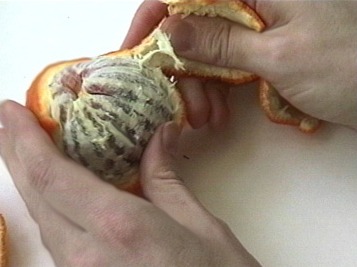
Video Experiments
Written by Tiffany Patrick | Posted by: Anonymous
The images and experiences that are created through experimental film and video are as varied as the artists that make them. There is, by definition, no formula for this kind of work. Like paintings or poems each work reflects the artist as much as the image. Sarah Smiley, artist and teacher, has taught video art at Massachusetts College of Art and U-Mass. Boston. Her work has been shown throughout the US and Europe.
TP: Do you identify yourself as an "experimental" video artist, or just a video artist.
Smiley: I would describe myself as an artist who does video experiments. That may be a semantic thing, but I think the distinction is that I want to emphasize the work as an experiment rather than qualifying the persona of "artist" as an experimenter. Incidentally, I think anyone can do video experiments.
TP: How do you describe your work?
Smiley: Mercifully short. Just kidding. Most of my work ranges in length from 1 minute to 7 minutes. I like using video effects and layering, but I want a real conceptual underpinning to each edit that I do. For example, a piece I created called "Levels of Undo" shows a hand peeling an orange, and writing and un-writing the words "I have no regrets." I use the page peel effect in that one very specifically.
I’m influenced by the writings of Philip K. Dick, and Borges, and also this odd book called "Secret Travel to Other Planets" by Ted Mooney. I like the idea of describing parallel universes in my work, and playing with the idea of alternative realities.
Audio to me is really important in conveying some of those layers of meaning. I think audio carries equal weight as the video, so really, perhaps we should devise a new term for video. I suppose "auvideo" is cumbersome, and "vaudio" is foolish, but in principle at least, it would be a good idea.
TP: What inspires the work? Is it something different than what may inspire "traditional" filmmakers, or is it perhaps similar to what inspires another type of artist, say a painter or sculptor?
Smiley: There are a few different motivating factors in my work. Sometimes I enjoy working with other people. For example, I am creating a series of water portraits using an underwater camera. I ask people to manipulate the surface of the water so that it distorts their own self-image. I also create work in which I approach a person and we develop a "persona" or character together, and I videotape and edit this persona.
I love using a camera. In some of my other work, I used to be more obsessed with getting a particular image, and spending a long time editing it. In the last two years however, I have become interested in the process of in-camera editing, video sketching, and creating a series of images as an extension of thought, in real time. In general, I want to represent thought, and psychological states through the edits in my work.
TP: What are you working on at the moment?
Smiley: I am in production on a piece called "Blue Car Loop." It is about a researcher who obsesses on blue cars. He does research on them in his lab, and tries to call blue cars on his cell phone in an attempt to communicate with them. Unfortunately, instead of getting any blue cars, he can only reach people. This frustrates him deeply.
TP: Sarah, what types of images do you enjoy working with?
Smiley: For some time I have been working with images I have created using an underwater video camera. However, currently I am obsessed with images of blue cars.
TP: Describe your first piece.
Smiley: Well, the process of creating video work for me initially was very messy. I got into sound before I got into video, and most of my work is conceptually and esthetically dependent on an audio element. Then I really started looking at video. My first thought about video was how cheesy it looked, and my second thought that followed was "…but the audio is great!" That’s what hooked me.
One of my first pieces was done at Massachusetts College of Art, as an undergraduate student, and it was about a self-serving sheep/sock puppet who urged people not to eat meat, or at least not sheep meat. Although that was lost in the sands of time, I followed with a video installation using images of eyes, facial features, and interviews with children to create a "television monster" in time for Halloween. From this work, I made a single channel piece called "Hello How Are You," which is a short video collage using images of eyes, moons, and playgrounds overlaying a short vignette narrated by a young girl about her life. That piece is probably the first that satisfied me. It took me two years before I was really satisfied esthetically with my ability to work with the video image.
For more information on Sarah Smiley, visit http://www.virtualberet.org/smiley/index.html. Experimental work is often shown as part of a program of other works but many film festivals, such as the Ann Arbor Film Festival, the New York Underground Film Festival, and the Northampton Film Festival feature experimental work in their programs. There are also many venues in New England that feature experimental works. Go to www.massexperiment.com or www.bostoncyberarts.com for more information.








